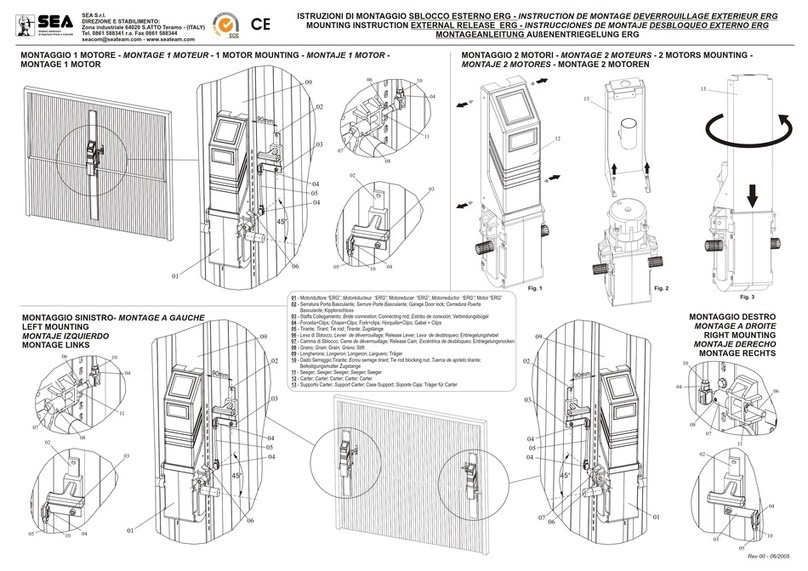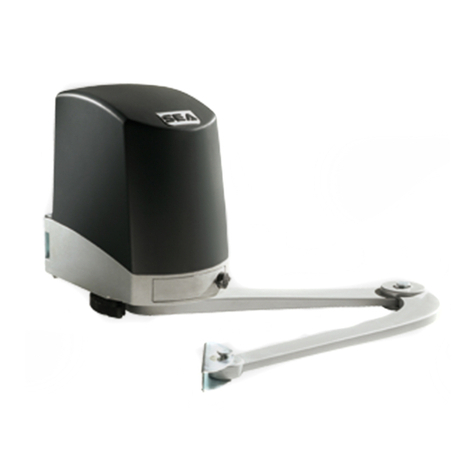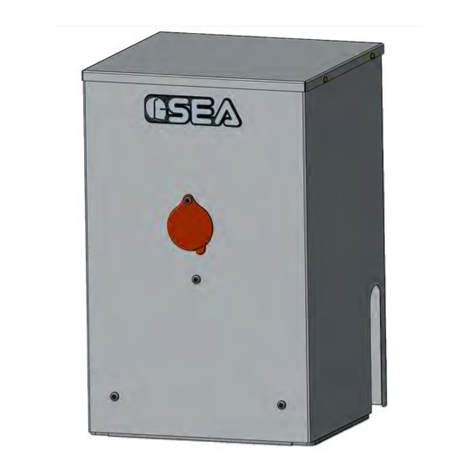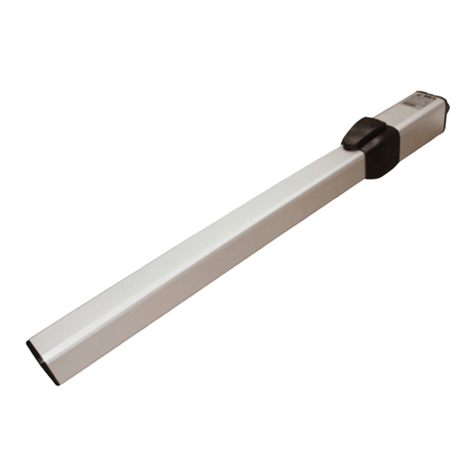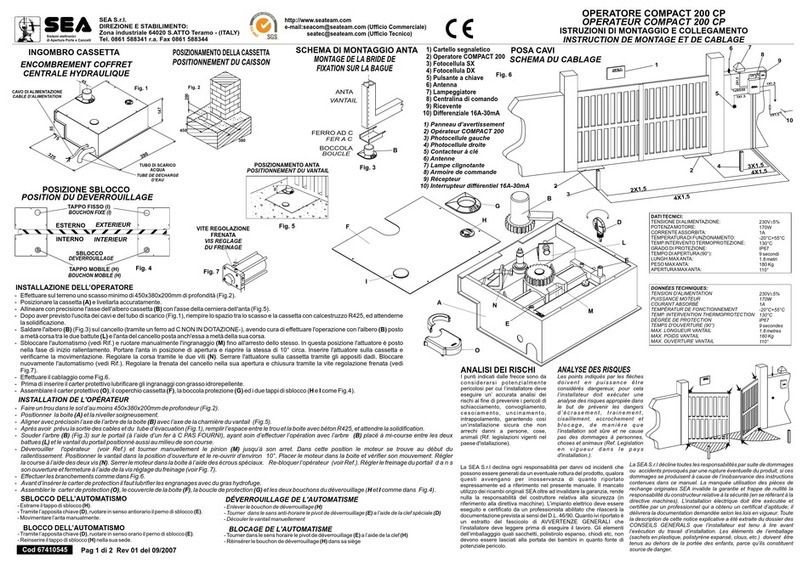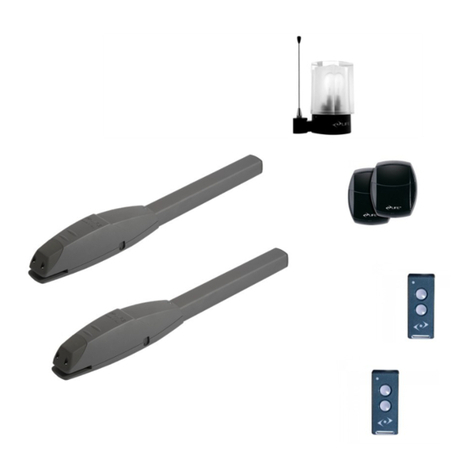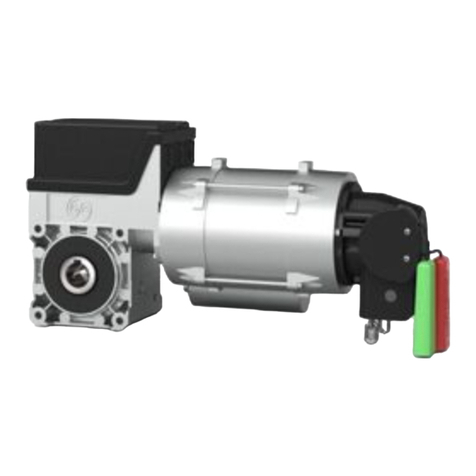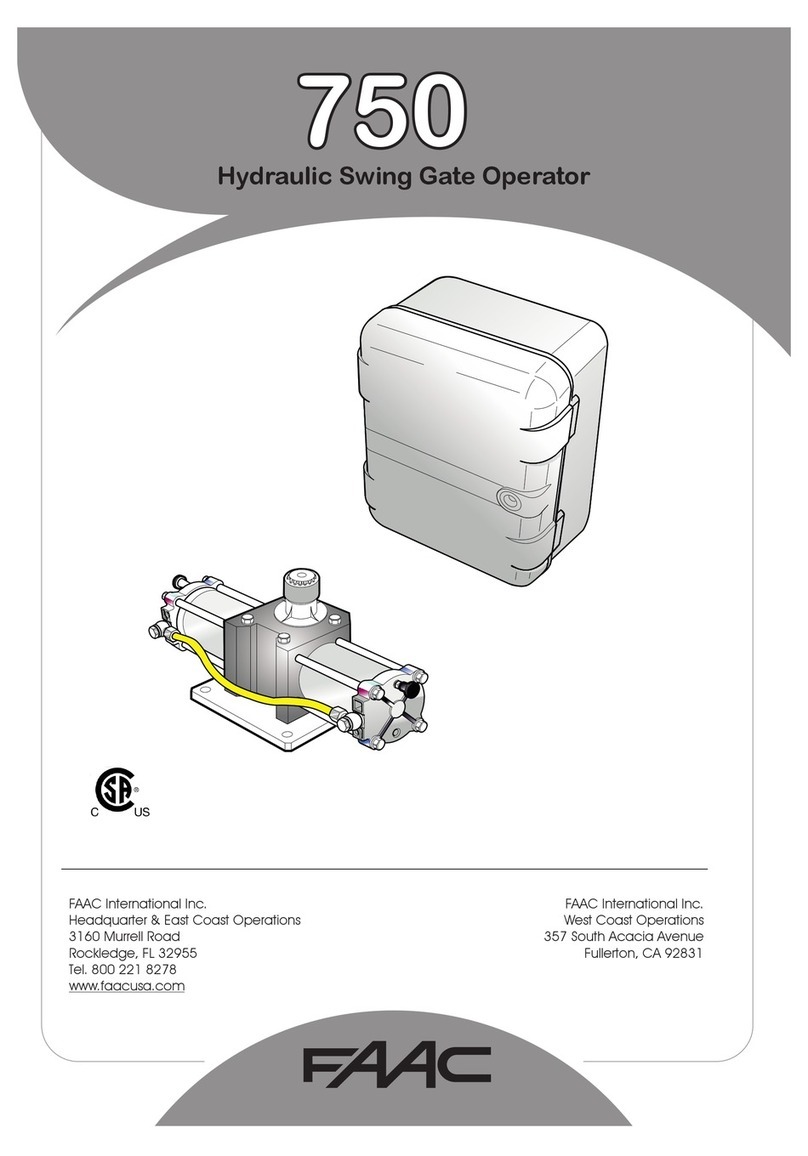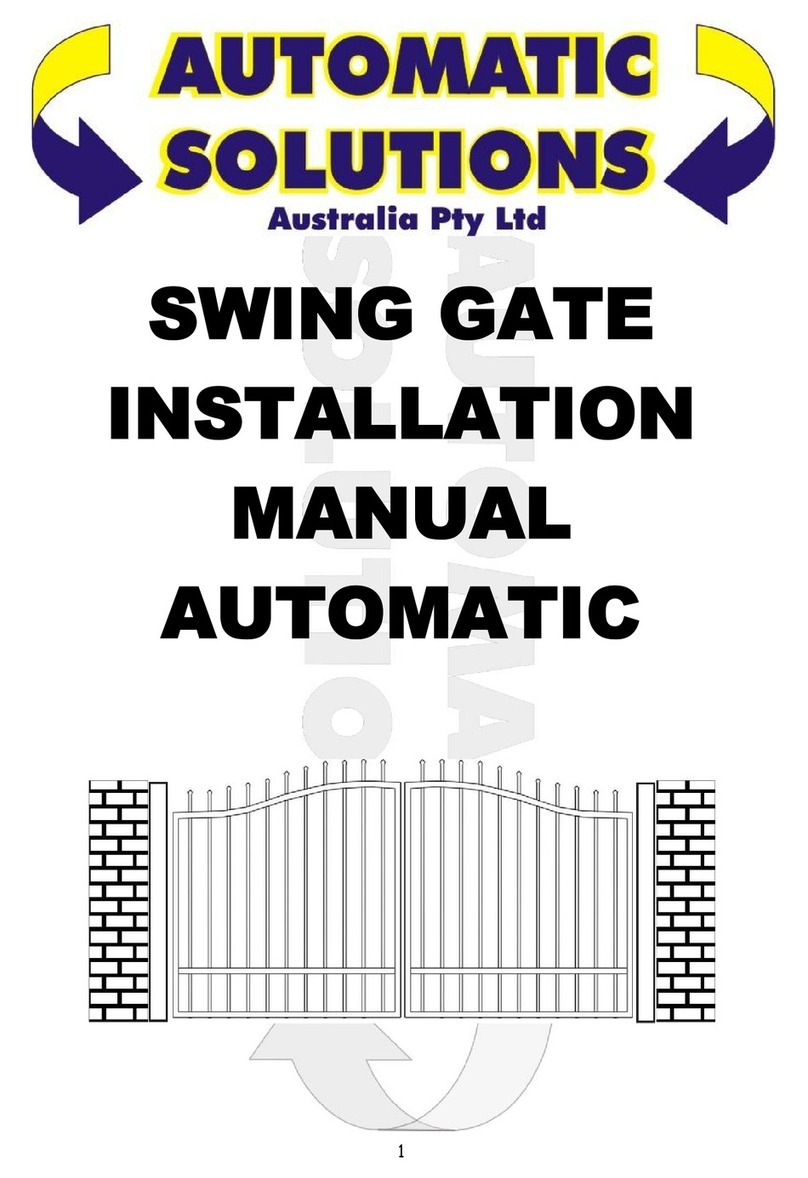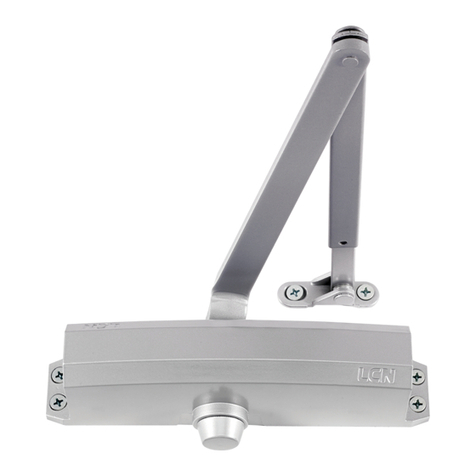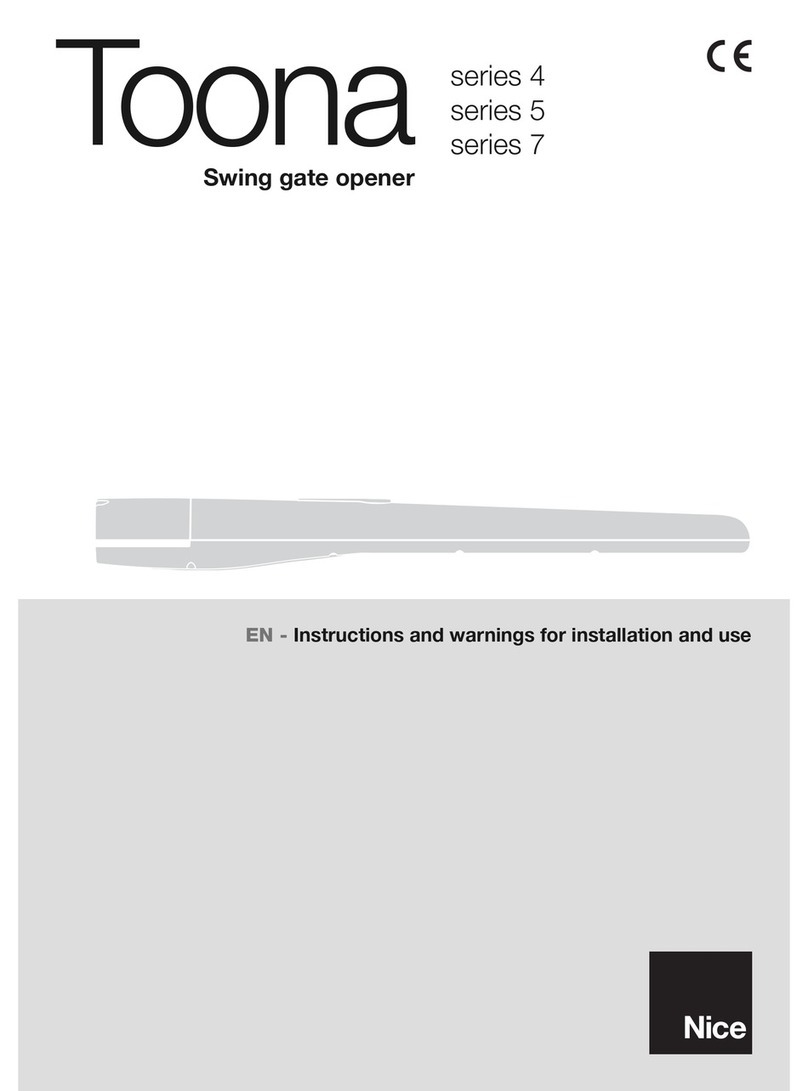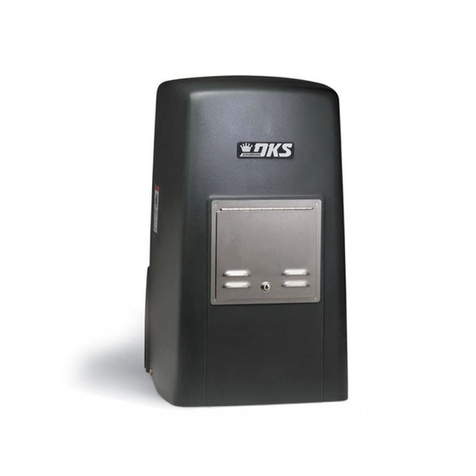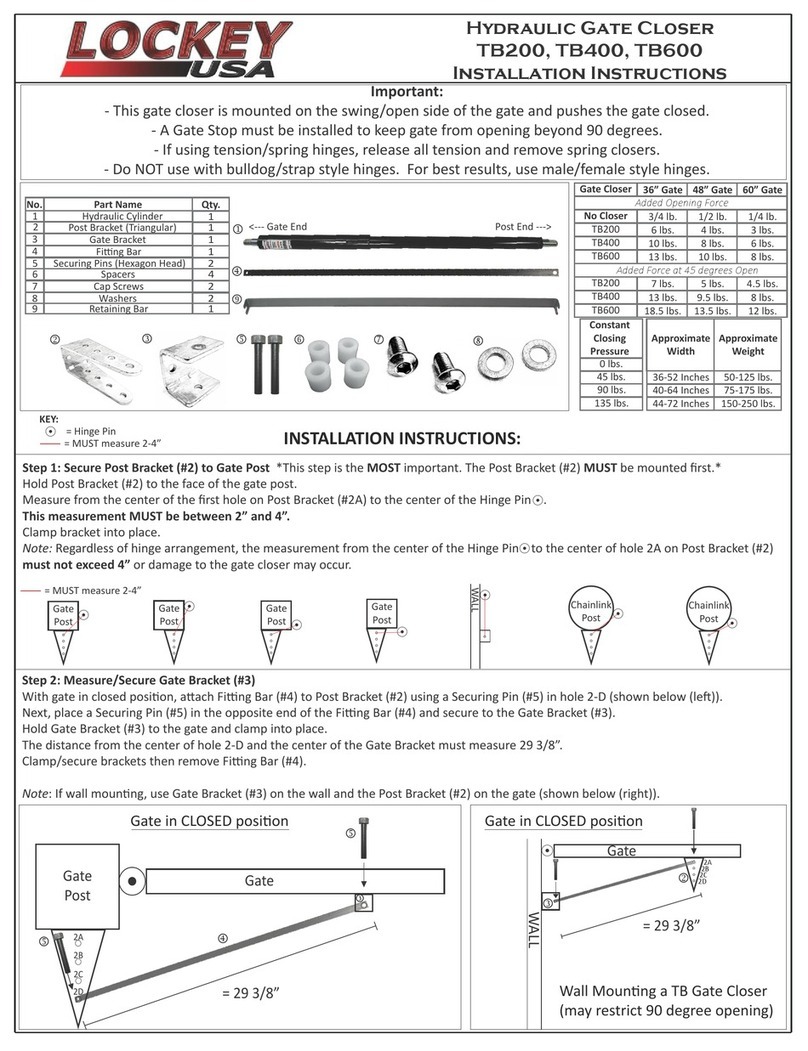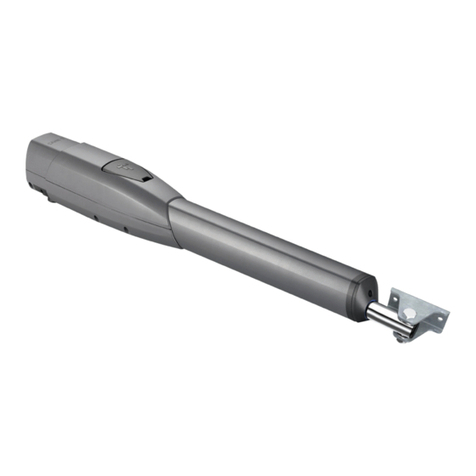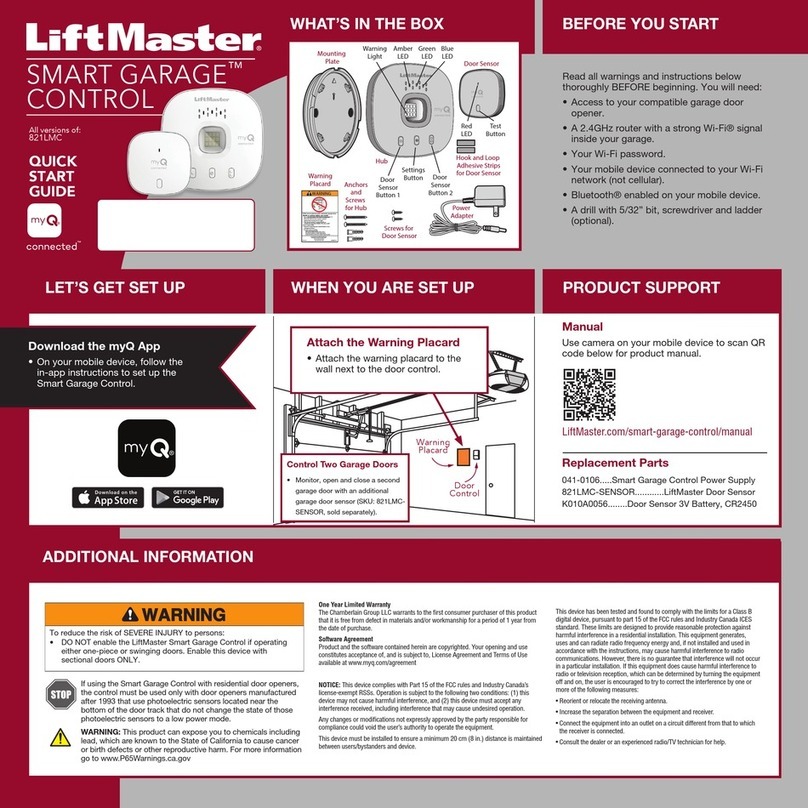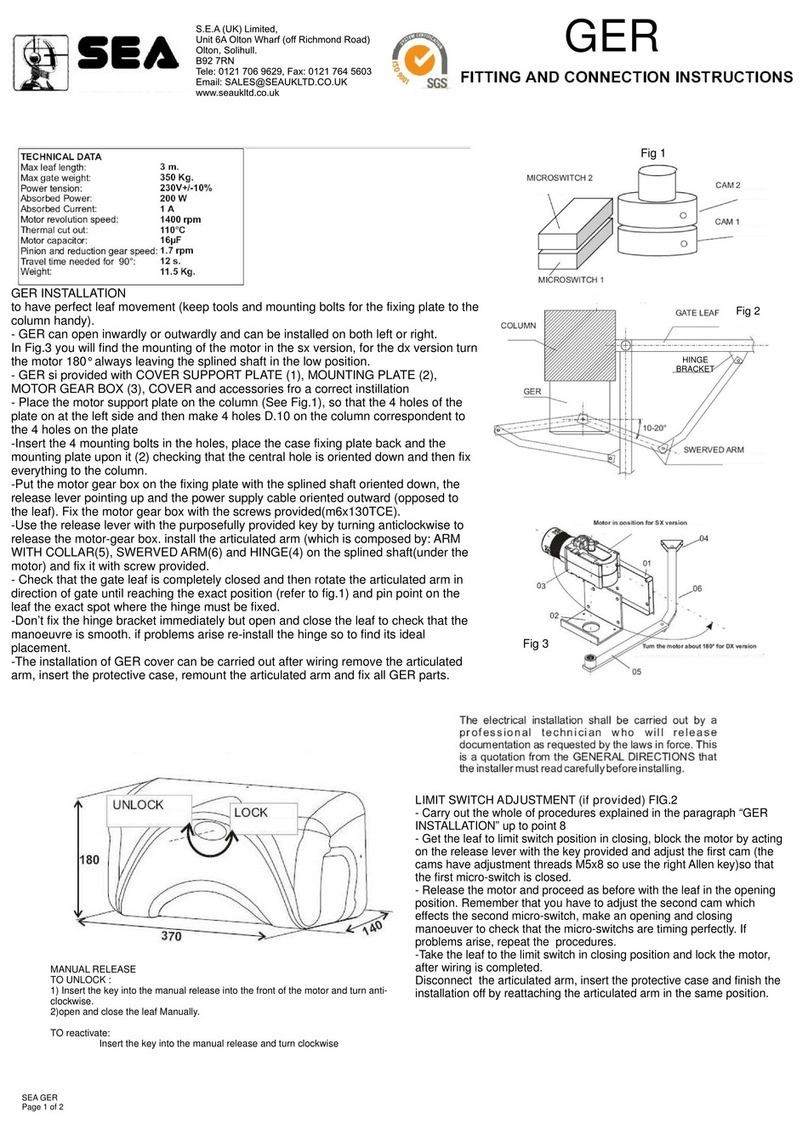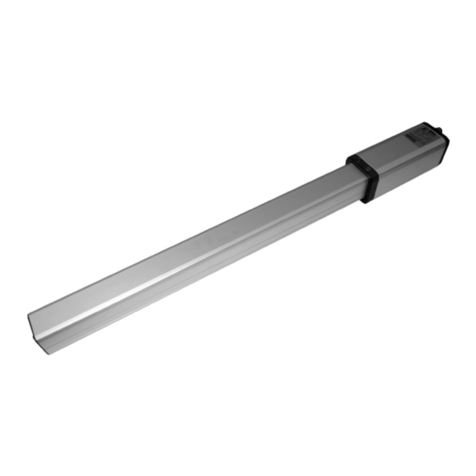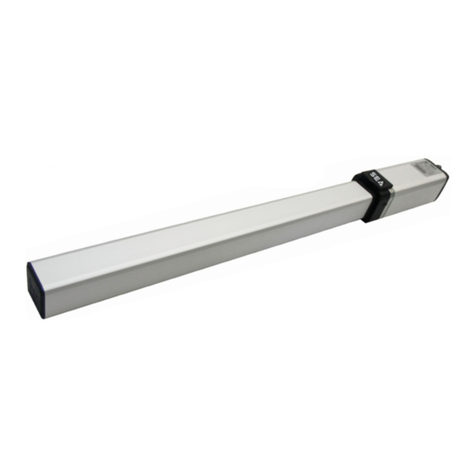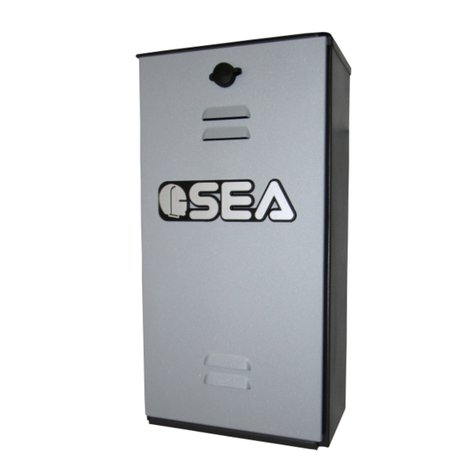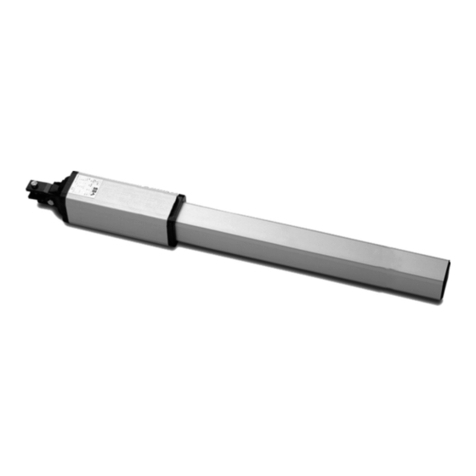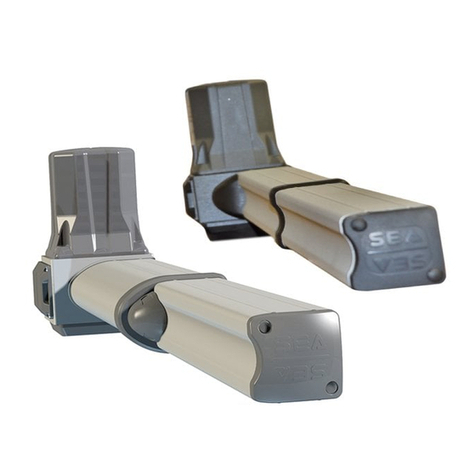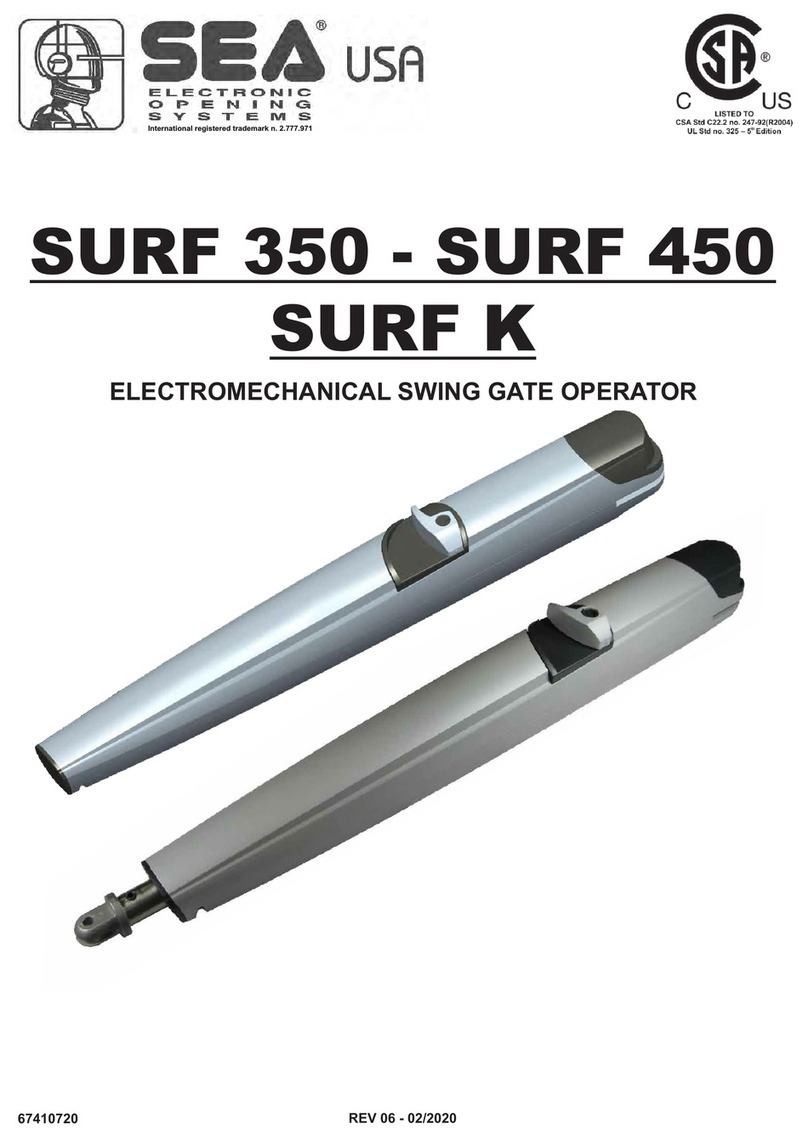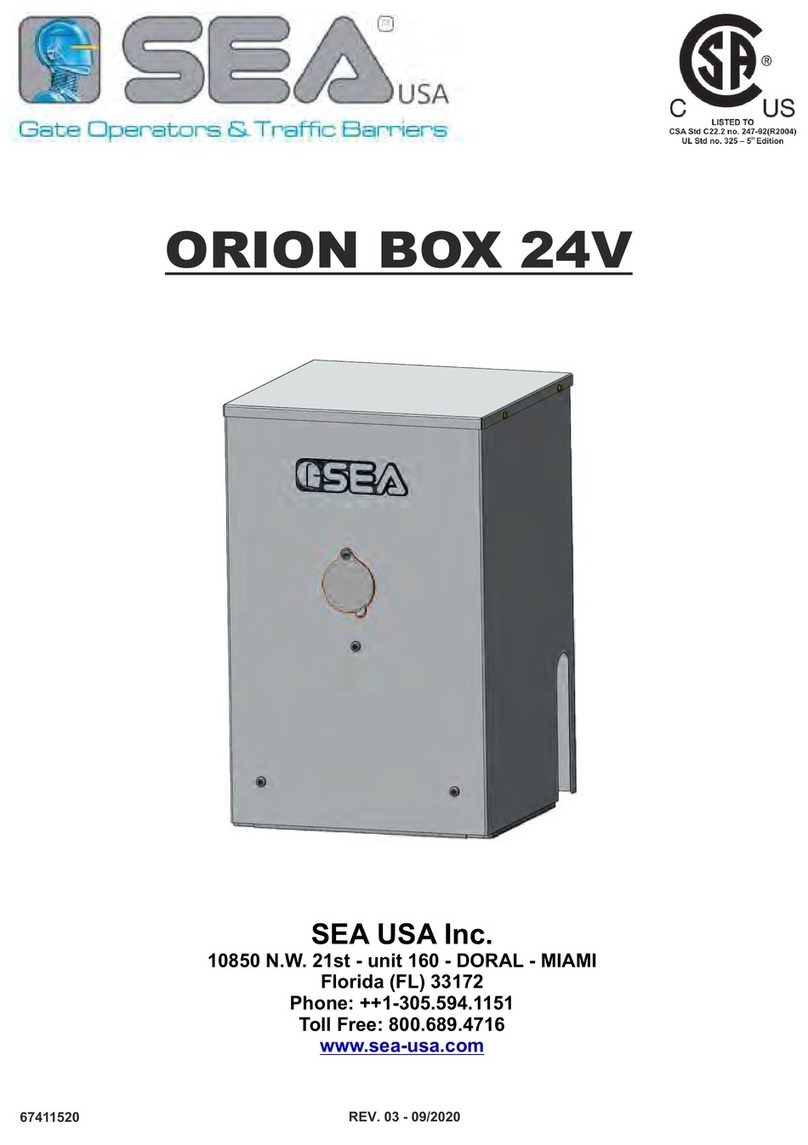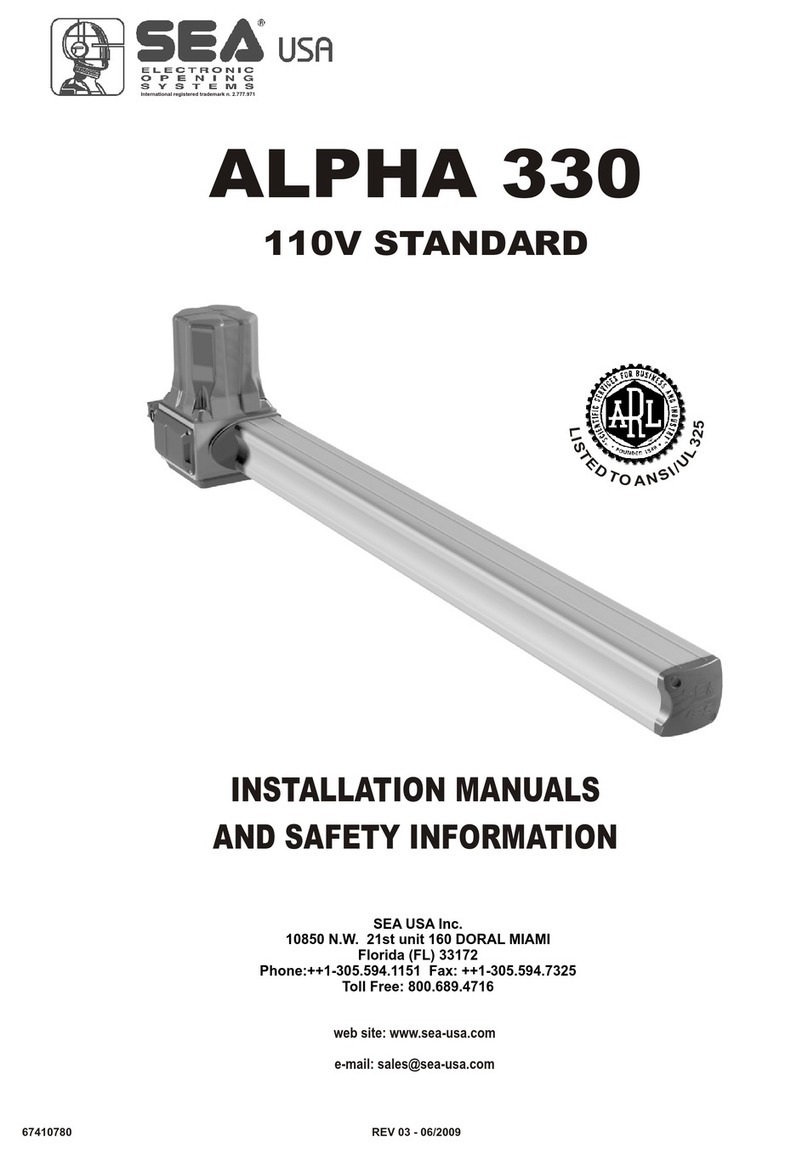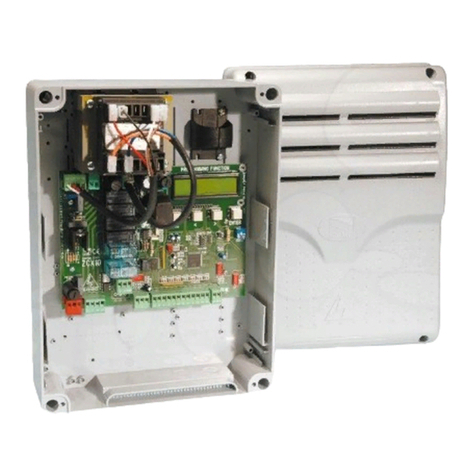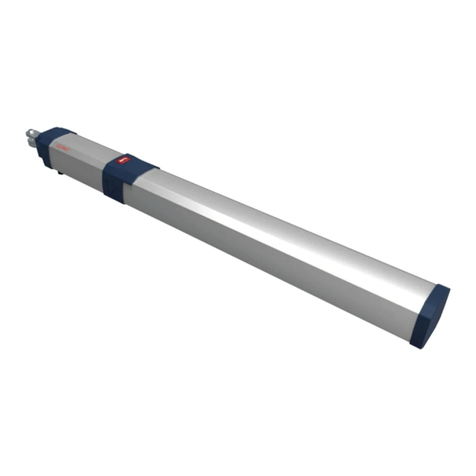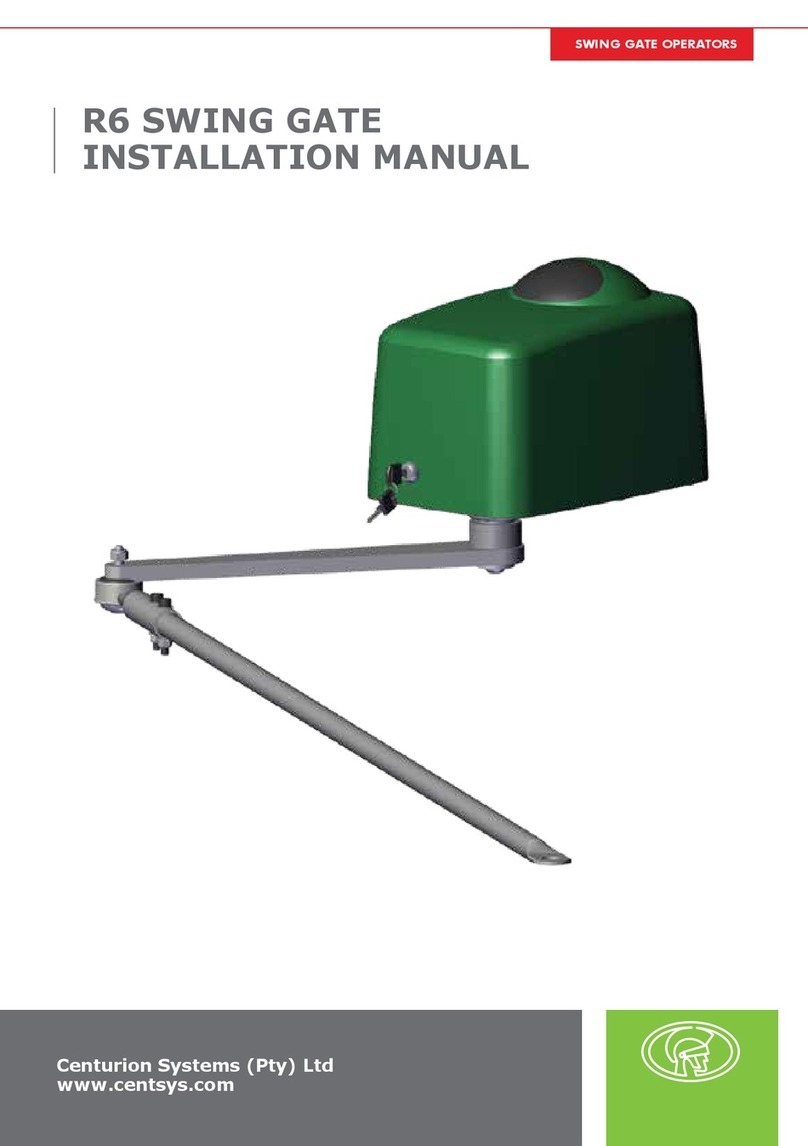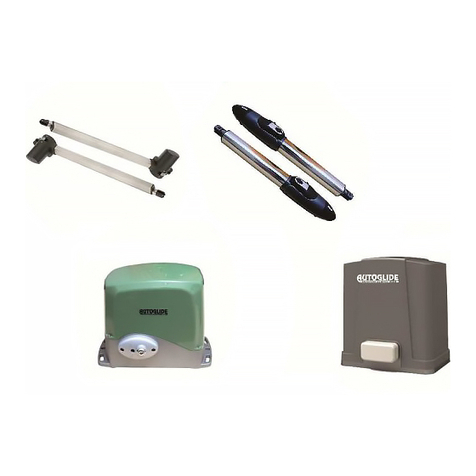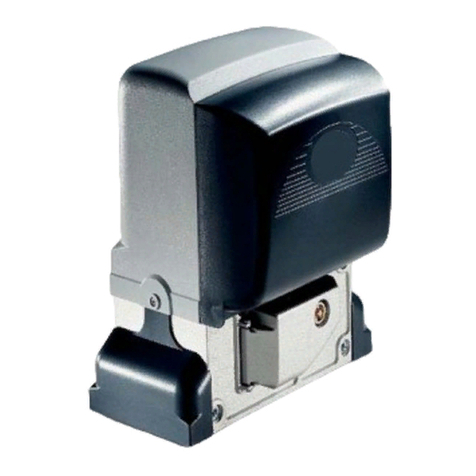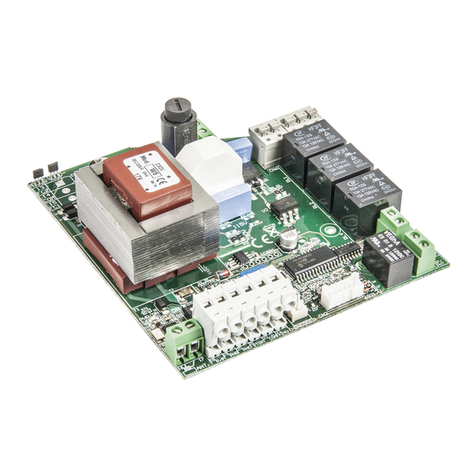
3
A gate operator shall be provided with the specific instructions describing all user adjustments required for proper
operation of the gate. Detailed instructions shall be provided regarding user adjustment of any clutch or pressure relief
adjustments provided. The instructions shall also indicate the need for periodic checking and adjustment by a qualified
technician of the control mechanism for force, speed, and sensitivity.
Instructions for the installation, adjustment, and wiring of external controls and devices serving as required protection
against entrapment shall be provided with the operator when such controls are shipped with the operator.
Instructions regarding intended installation of the gate operator shall be supplied as part of the installation instructions
or as a separate document. The following instructions or the equivalent shall be supplied where applicable:
IMPORTANT INSTALLATION INSTRUCTIONS
1. Install the gate operator only when:
a. The operator is appropriate for the construction of the gate and the usage Class of the gate
b. All openings of a horizontal slide gate are guarded or screened from the bottom of the gate to a minimum of 4 feet
(1.22 m) above the ground to prevent a 2-1/4 inch (57.2 mm) diameter sphere from passing through the openings
anywhere in the gate, and in that portion of the adjacent fence that the gate covers in the open position
c. All exposed pinch points are eliminated or guarded
d. Guarding is supplied for exposed rollers
2. The operator is intended for installation only on gates used for vehicles. Pedestrians must be supplied with a
separate access opening. The partial access opening shall be designed to promote pedestrian usage. Locate the gate
such that persons will not come in contact with the vehicular gate during the entire path of travel of the vehicular gate.
3. The gate must be installed in a location so that enough clearance is supplied between the gate and adjacent
structures when opening and closing to reduce the risk of entrapment. Swinging gates shall not open into public access
areas.
4. The gate must be properly installed and work freely in both directions prior to the installation of the gate operator. Do
not over-tighten the operator clutch or pressure relief valve to compensate for a damaged gate.
5. The gate operator controls must be placed so that the user has full view of the gate area when the gate is moving and
AWAY FROM THE GATE PATH PERIMETER.
6. Controls intended for user activation must be located at least six feet (6’) away from any moving part of the gate and
where the user is prevented from reaching over, under, around or through the gate to operate the controls. Outdoor or
easily accessible controls shall have a security feature to prevent unauthorized use.
7. The Stop and/or Reset button must be located in the line-of-sight of the gate. Activation of the reset control shall not
cause the operator to start.
8. A minimum of two (2) WARNING SIGNS shall be installed, one on each side of the gate where easily visible
9. FOR GATE OPERATORS UTILIZING A NON-CONTACT SENSOR:
a. See instructions on the placement of non-contact sensors for each Type of application
b. Care shall be exercised to reduce the risk of nuisance tripping, such as when a vehicle, trips the sensor while the
gate is still moving
c. One or more non-contact sensors shall be located where the risk of entrapment or obstruction exists, such as the
perimeter reachable by a moving gate or barrier
10. FOR A GATE OPERATOR UTILIZING A CONTACT SENSOR:
a. One or more contact sensors shall be located where the risk of entrapment or obstruction exists, such as at the
leading edge, trailing edge, and postmounted both inside and outside of a vehicular horizontal slide gate.
b. One or more contact sensors shall be located at the bottom edge of a vehicular vertical lift gate.
c. One or more contact sensors shall be located at the pinch point of a vehicular vertical pivot gate.
d. A hardwired contact sensor shall be located and its wiring arranged so that the communication between the sensor
and the gate operator is not subjected to mechanical damage.
e. A wireless contact sensor such as one that transmits radio frequency (RF) signals to the gate operator for
entrapment protection functions shall be located where the transmission of the signals are not obstructed or
impeded by building structures, natural landscaping or similar obstruction. A wireless contact sensor shall function
under the intended end-use conditions.
f. One or more contact sensors shall be located on the inside and outside leading edge of a swing gate. Additionally, if
the bottom edge of a swing gate is greater than 6 inches (152 mm) above the ground at any point in its arc of travel,
one or more contact sensors shall be located on the bottom edge.
g. One or more contact sensors shall be located at the bottom edge of a vertical barrier (arm).
INSTRUCTION REGARDING INTENDED OPERATION OF THE GATE OPERATOR SHALL BE PROVIDED AS PART OF THE USER
INSTRUCTIONS OR AS A SEPARATE DOCUMENT. THE FOLLOWING INSTRUCTIONS OR THE EQUIVALENT SHALL BE PROVIDED
















